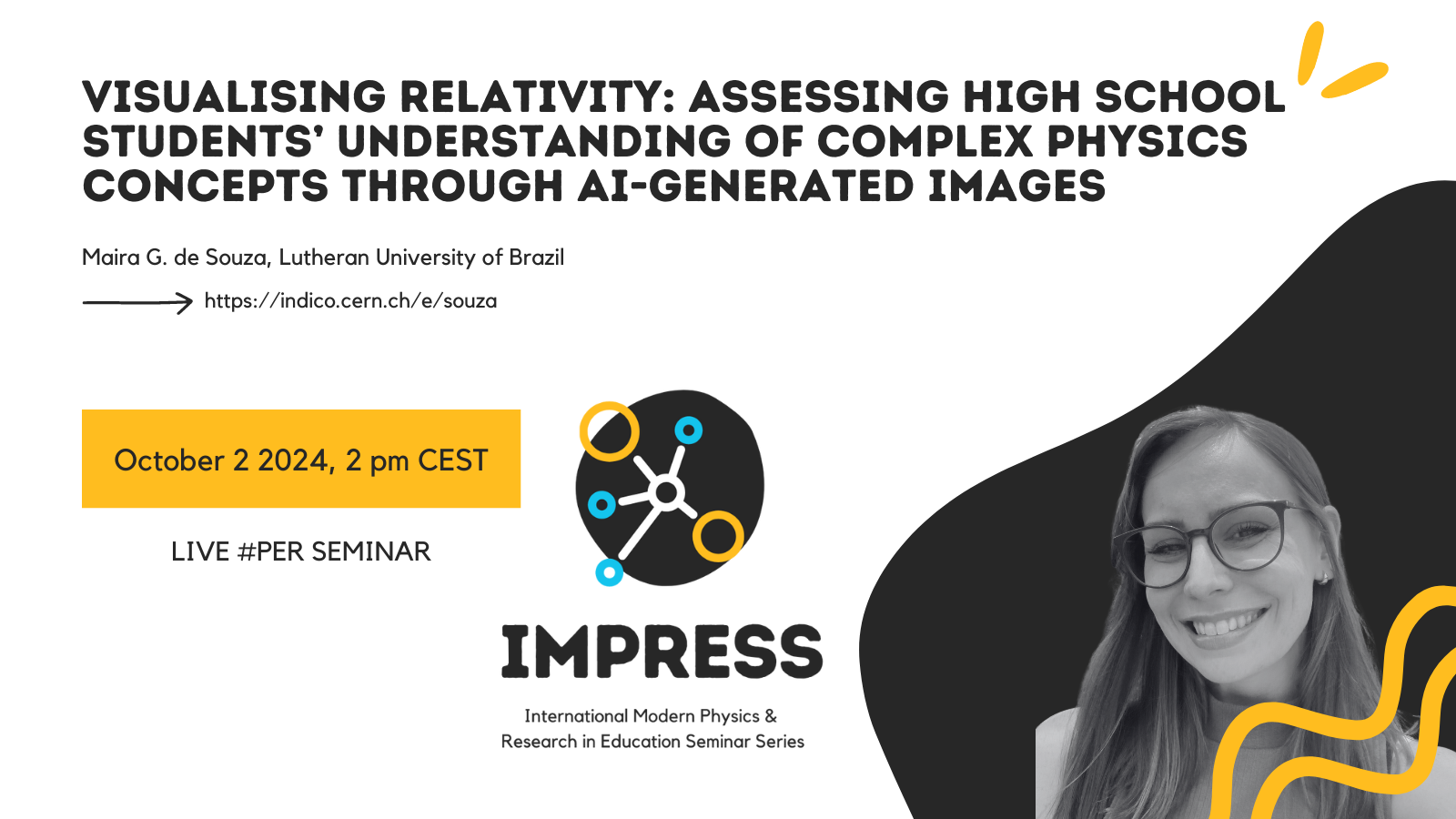Visualising relativity: Assessing high school students’ understanding of complex physics concepts through AI-generated images
by
From the big bang to black holes, from elementary particles and the fundamental interactions that govern our universe to the world's largest and most complex scientific instruments, our knowledge of the world builds on modern physics. To make our current-best understanding available to all, we need to invest in educational research and bridge the gap between those who know science, those who teach science, and those who learn science.
This month, we are going to discuss a paper by Maira G. de Souza, Mihye Won, David Treagust, and Agostinho Serrano:
This study investigates how students utilized artificial intelligence (AI)-generated images to represent their understanding of general relativity concepts. Ten high school students participated in an extracurricular course on relativity theory. Using AI chatbot, these students created visual representations of 'relativity' before and after the course. The produced images, the accompanying prompts, student interviews, and their test scores were analysed to examine students' conceptual understanding and interactions with AI. Students with a clearer understanding of relativity tended to focus their prompts on more central concepts like spacetime deformation. In contrast, those with a weaker understanding leaned towards more tangential ideas. The clarity of their prompts was directly linked to more effective AI interactions, leading to more meaningful image generation. Despite this, some students faced challenges in crafting coherent prompts, resulting in less relevant images, indicating that understanding the concept does not always translate into successful AI engagement. The study underscores the potential of AI-generated images as a tool to illuminate student conceptualisation and interaction skills with AI in the context of complex physics concepts, offering a novel approach to evaluating understanding in advanced scientific topics.
Paper:

Magdalena Kersting (Department of Science Education, University of Copenhagen, Denmark) and Julia Woithe (Science Gateway Education, CERN, Switzerland)